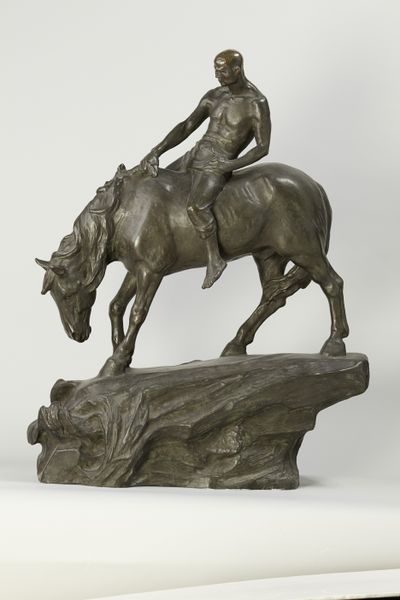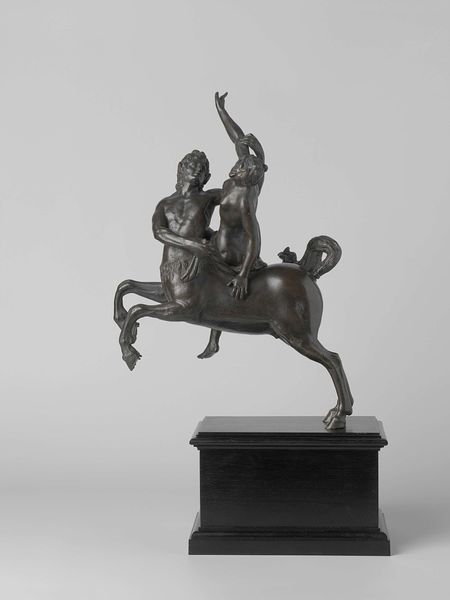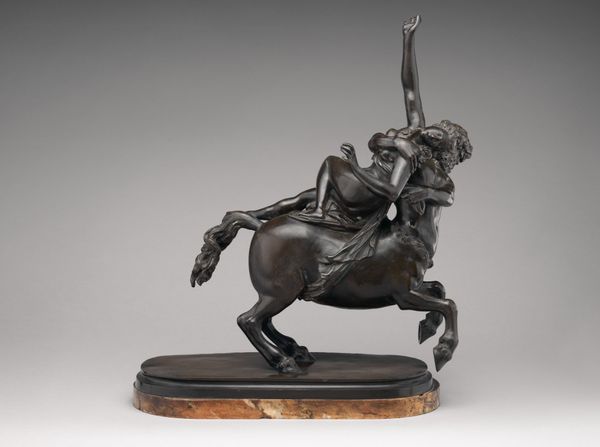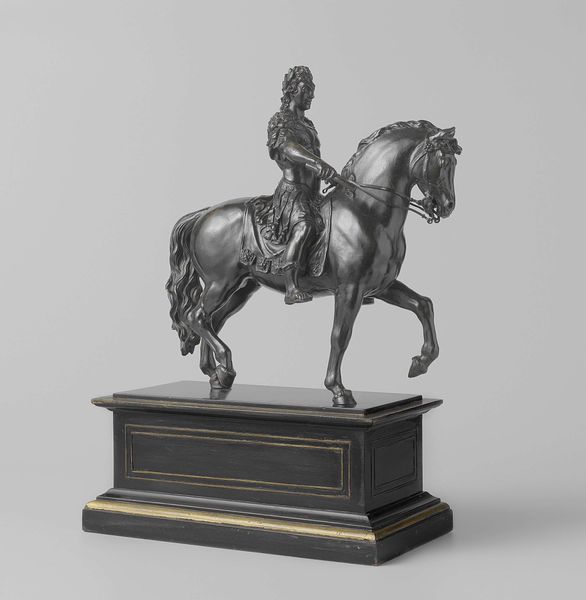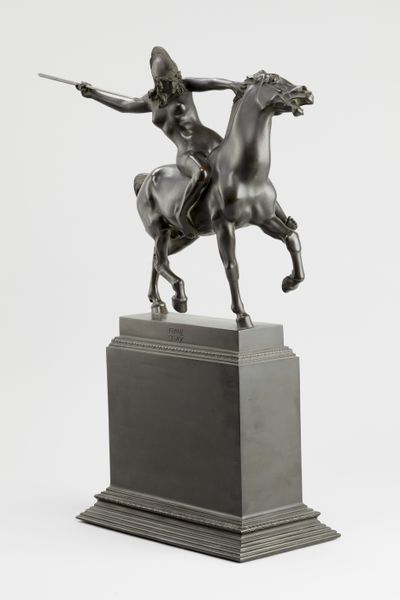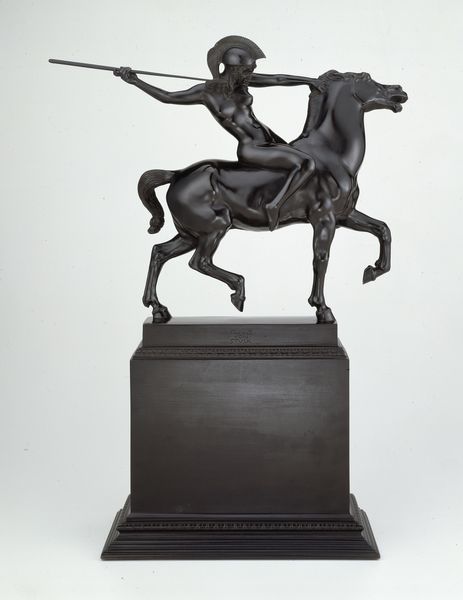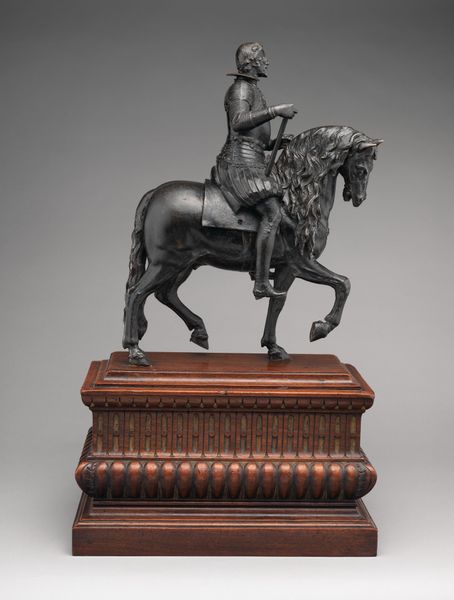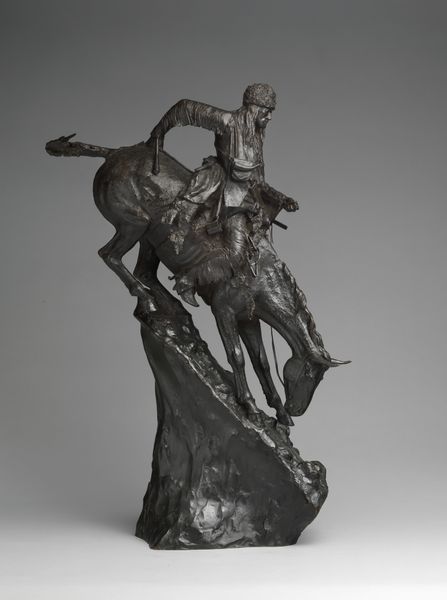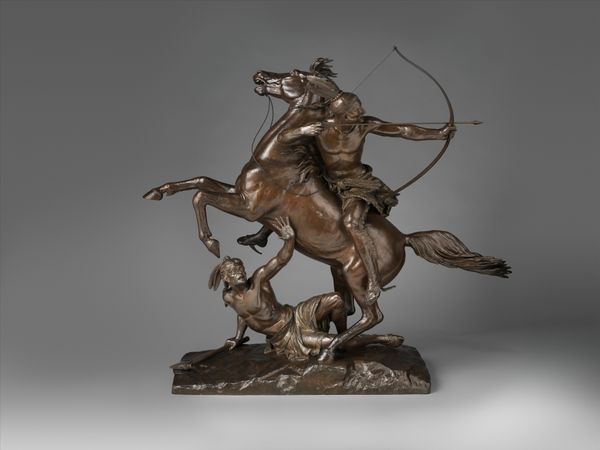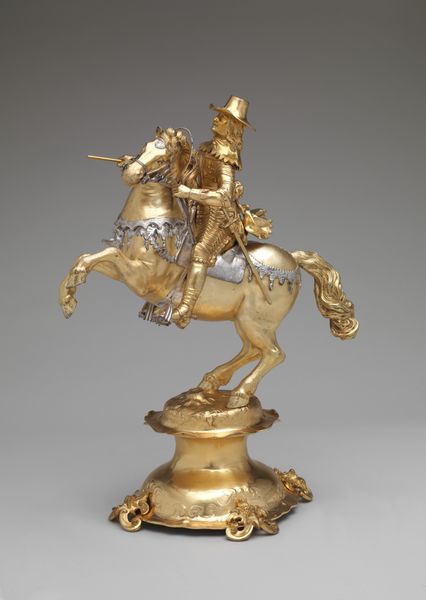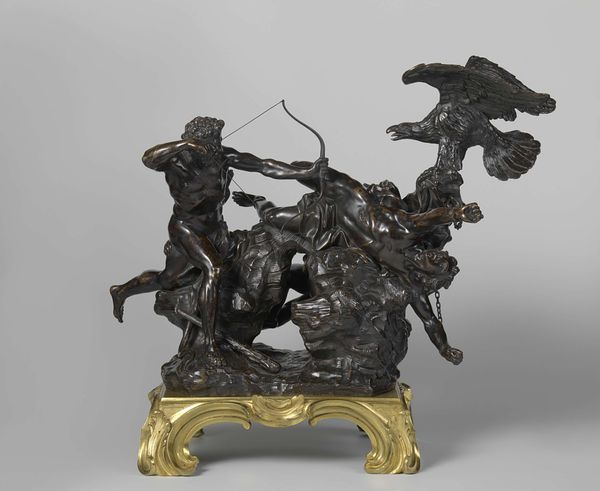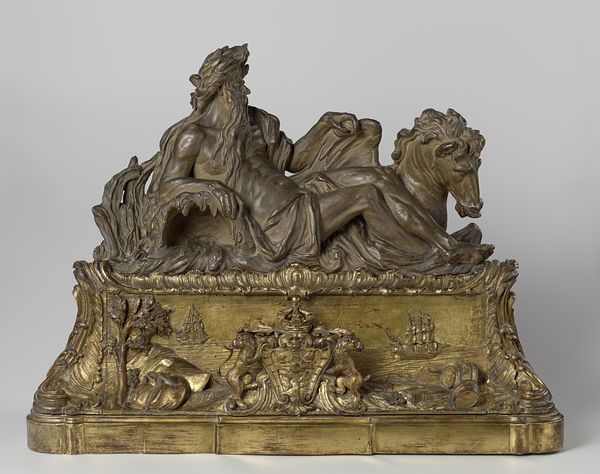
Two Fighting Knights, Known as ‘Mort de Monseigneur le Duc de Clarence’ 1838
0:00
0:00
metal, bronze, sculpture
#
medieval
#
narrative-art
#
metal
#
sculpture
#
landscape
#
bronze
#
figuration
#
form
#
sculpture
#
romanticism
#
history-painting
Dimensions: height 54 cm, width 61 cm, depth 21 cm
Copyright: Rijks Museum: Open Domain
Curator: Editor: We're looking at "Two Fighting Knights, Known as ‘Mort de Monseigneur le Duc de Clarence’," a bronze sculpture crafted by Alfred Emile O'Hara de Nieuwerkerke in 1838. The dramatic scene feels frozen in time. What are your initial thoughts on this piece? Curator: What interests me most is the means of its production. Bronze casting, especially at this scale, involves a complex interplay of labor and materials. Consider the societal implications, not just of depicting noble conflict, but also of consuming luxury goods crafted through intensive labor. Does the base itself, adorned with Gothic motifs and inscriptions, play into this idea of luxury, maybe setting up the heroic narrative for those wealthy enough to possess it? Editor: That's interesting. I hadn’t really considered the economics of its creation. The detail is incredible; how would the artist achieve such a smooth surface? Curator: Exactly! The "how" is crucial. This piece encourages questions about bronze as a valued medium. Consider its industrial associations: the mining of raw materials, the skilled labor of the foundry, and the circulation of this finished artwork in the art market. Were pieces like this intended to emulate craft, while really being industrial in manufacture? Editor: It’s fascinating to think of the gap between the medieval subject and the nineteenth-century process. Curator: And doesn't the "Romantic" idealisation of medieval warfare clash with the material realities of nineteenth-century production? This disconnect is, in itself, a telling commentary on social values, don't you think? Editor: Absolutely, I see how considering the materials and labor changes my whole understanding of the piece! Curator: Indeed. Analyzing the artwork this way allows us to appreciate it beyond just the surface. Editor: I'll definitely be paying closer attention to material context moving forward. Thanks!
Comments
rijksmuseum about 2 years ago
⋮
Medieval knights fired the imagination of 19th-century Europeans. This figure group represents the Battle of Baugé (1421) from the Hundred Years’ War between England and France. There is a detailed description of the battle on the base. The group was made by Alfred de Nieuwerkerke, a French-Dutch sculptor and later an important French cultural minister.
Join the conversation
Join millions of artists and users on Artera today and experience the ultimate creative platform.
